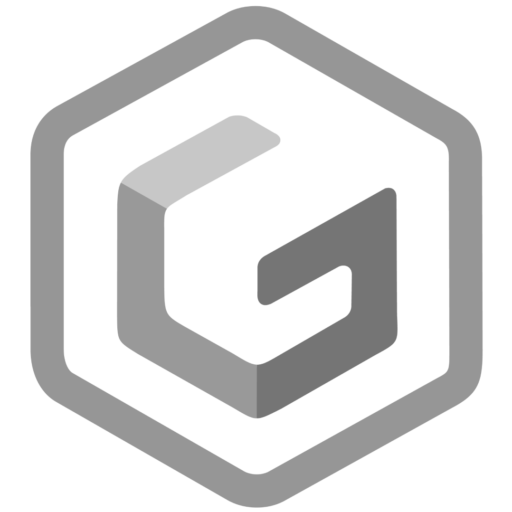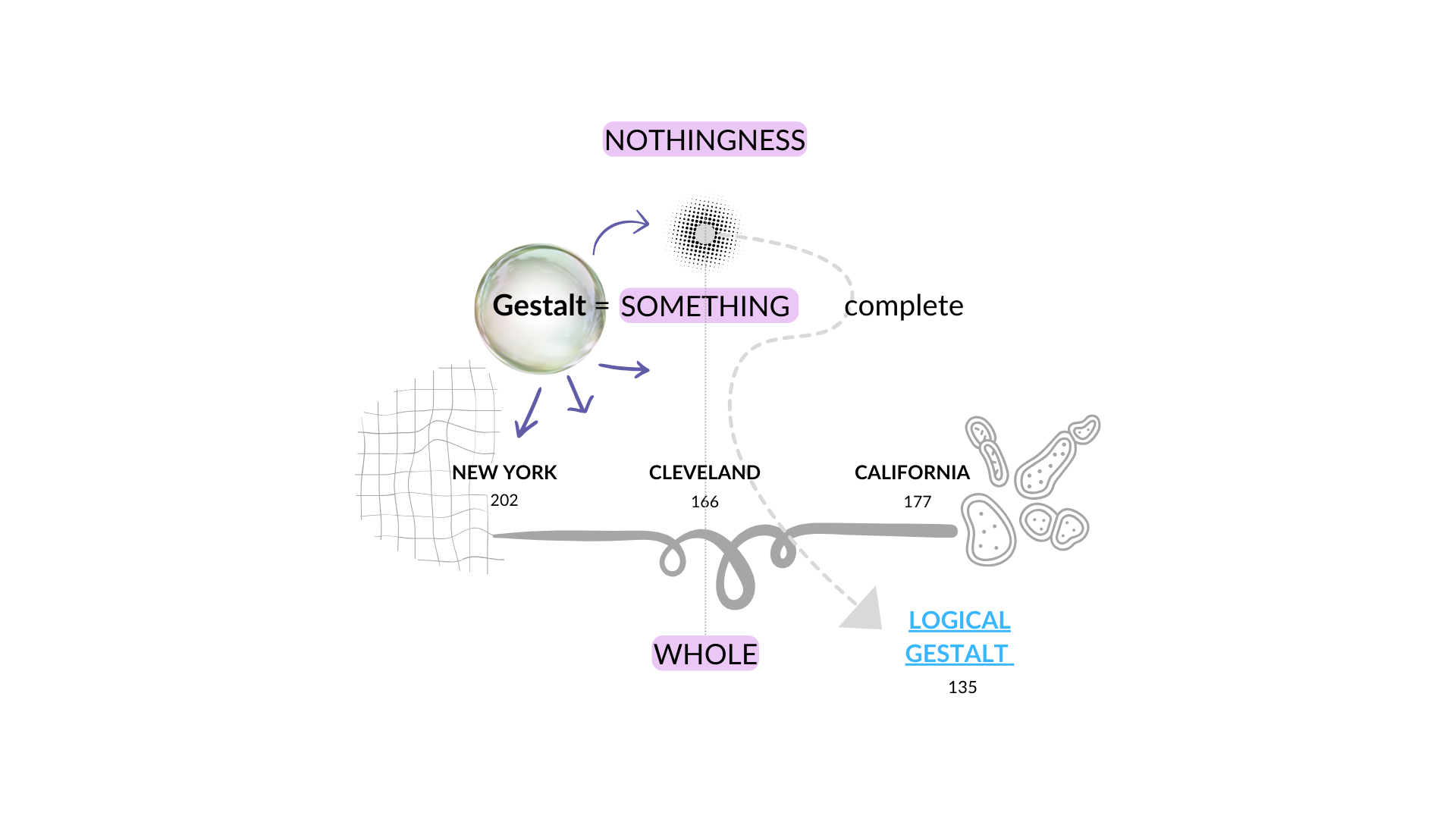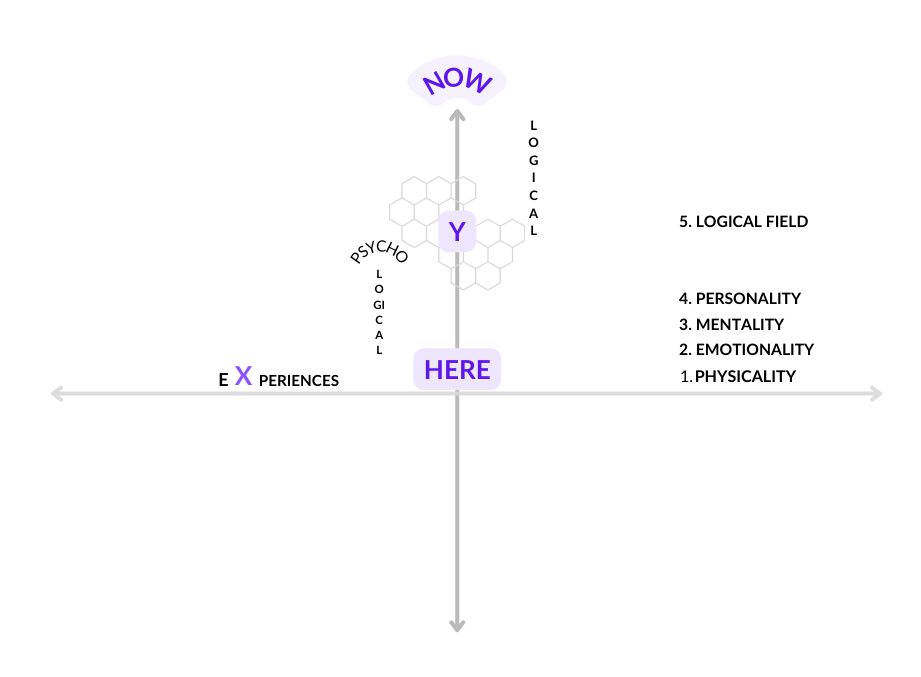LOGICAL GESTALT: Two “here and nows”
What is Gestalt?
The now is where the only potential for change resides.
Gestalt is a psychological approach that works from the PRESENT, understanding that the now (+ the past as remembered now + the future as anticipated now) is where the only potential for meaningful change exists. It encourages individuals to regain their spontaneity and take responsibility for themselves. This is achieved by focusing attention, enabling new perceptions of the reality that generates suffering.

The whole is greater than the sum of its parts
Gestalt is based on the premise that “the whole is greater than the mere sum of its parts.” Therefore, it focuses on a person’s awareness (different from reasoning)—that surprising “aha!” moment that seems to emerge from nowhere. In reality, it arises from what the therapist asks, what they remain silent about, and what they share, all from a perspective that views the human being as full of potential, while also understanding how they block themselves psychopathologically.
Stop leaking energy
Practically speaking, we work with the individual’s experience as it IS, offering support and understanding while focusing on avoided areas to reclaim the energy wasted in outdated conflict management patterns—patterns that drain the capacity to fully live in the present.
More about pure Gestalt Therapy
Three major models of Gestalt Therapy
Within Gestalt, there are three distinct schools of thought. All aim to improve the “good forms” in the relationship between O (Organism) and E (Environment). This helps individuals resolve unfinished business, staying vital and creatively connected to others while fully inhabiting the present.
1. The New York school
The first to emerge, this school placed a strong emphasis on the theoretical and practical study of growth and its obstacles, namely psychopathology.
Key Features:
- Paradigm: Field-based (vs. individualistic).
- Focus on co-construction and territory, rather than maps.
- The relationship with the environment precedes the individual.
- Emphasis on interdependence.
- No use of techniques.
2. The Cleveland school
Next came the Cleveland school, also called Relational Gestalt, emphasizing both group and individual processes.
Key Features:
- Paradigm: I-Thou, with a focus on relationships.
- Focus on group life stages.
- Emphasis on mutuality between O and E, facilitating personal and group growth.
- Use of techniques.
3. The California line
Finally, the California line emerged with a technique-driven, atheoretical existentialism. It focuses on facilitating awareness, often using dynamic methods. An example is the “empty chair” technique, widely recognized in other psychological approaches but empowered by Gestalt’s unique perspective.
Key Features:
- Paradigm: Individualistic. I-Thou.
- Emphasis on the organism (O) in the O/E equation, particularly its internal maps.
- Focus on self-dependence.
- Use of techniques.
The Therapy experience
In general, Gestalt therapy helps you integrate conflicting, scattered, or dissociated parts of yourself, building trust in your organism while rediscovering creativity to connect with your environment in new and inspiring ways.
I have trained in all three schools, and since 2020, I’ve been exploring one guiding question:
What motivated Fritz Perls’ transition from New York to California Gestalt?
He said: “Watch out—life is good!” And, paraphrasing what you’ll find in Hive Mindset, I add: “Life is meant to be both meaningful and fun!”
Logical Gestalt: From the HERE AND NOW to SPACE AND TIME
In therapy, patients bring conflicts related to their relationships, whether personal or social. Using a logical lens, I extend the concept of environment to include Space-Time dimensions.
Using straightforward language, I aim to expand Gestalt concepts like “organismic wisdom” or “creative void” into technical terms, enabling us to better understand how we relate to Nature, the Environment, Planet Earth, and even the Solar System.
Hive Mindset
I also write about improving as a species by interconnecting our psychological and psychic developments to perceive ourselves as part of a WHOLE—without losing our individuality. This idea is explored further in Hive Mindset.
What is that WHOLE that gives meaning to the parts that compose it?
The crisis in Psychology
“We live in a time where the overwhelming flow of information can result in infoxication, triggering symptoms of mental fatigue such as:
- Hyperactivity with little joy
- A sense of aging too quickly
- Lack of meaning
- Increased automatism
- Loneliness from struggling to piece together a chaotic world
If the container of reference is something as unstable as fake news or magical theories promising quick fixes, the risk is either “leaking oil” and sinking into depression, or becoming overstimulated and hyperaccelerated without ever finding true meaning.
Solution to infoxication:
Gestalt therapy offers a slow, grounding space to make healthy adjustments starting from your body, an excellent stabilizing focus.
However, even among professionals, divisions and theoretical disputes abound. Psychology, as a whole, faces an evident yet unacknowledged crisis.
This is why I seek a broader framework—a Gestalt that provides stability, steering clear of mysticism or leaps of faith. I’ve found the most grounding parameters to be Space-Time—the abstract, logical references that underpin the HERE AND NOW.
So many years associating Gestalt with the HERE AND NOW, and it turns out that the next container layer for this era is in the same words, but in their abstract logical reference: Space and Time.
How fascinating—and yet, how LOGICAL!
Tomography of the Present

Here and Now: Psychological Perspective
The Here and Now: Psychological Perspective is the traditional approach of Gestalt Therapy, emphasizing the relationship between the Organism and its Environment. The present experience is pivotal, enabling individuals to reestablish a healthy and dynamic connection with their surroundings through self-awareness and contact with the body and emotions.
“Awareness”
The goal is to facilitate awareness—the spontaneous recognition of what is truly happening in the present moment, free from overthinking and self-doubt.
Resolving Emotional Blockages
This process helps resolve emotional blockages and enhances self-regulation, both of which are fundamental pillars of Gestalt Therapy. Here, your personal history and identity work will be central to restructuring them in more fluid and exciting ways.
Here and Now: Logical Perspective
The Here and Now: Logical Perspective goes beyond psychological structure to focus on the psychic structure (which psychiatrists often address superficially with medication). This perspective considers the axiomatic principles that allow psychology (time, a psyche) to inhabit a space (such as the body or a physical territory) and examines the relationships between these principles, psychiatric phenomena, the suffering from lack of meaning, and loneliness.

• A Broader understanding of human behavior
This approach leads us to a new understanding of fundamental logical concepts such as NOTHINGNESS, THE WHOLE, and SOMETHING, which constitute and organize our consciousness, allowing us to comprehend human behavior from a broader perspective, connecting with essential elements of nature and the universe..
For example, by following a logical thought process such as:
“The body is made of materials from this planet that persist even after the psyche fades away,”
we can ask:
What is the relationship between the behavior of biological life and the planet’s movement around its star, as measured by a calendar?
This question goes beyond interpretive symbolism, like astrology, and aims to understand what it means to exist within a specific frequency in a 365- or 366-day cycle, while exploring other connections between logic, mathematics, and BEING.
• NON-EXISTENTIAL Approach
The Logical Here and Now, unlike the psychological approach used in therapy, is a NON-EXISTENTIAL approach. Therefore, it is not included in psychotherapeutic processes.
The novelty I bring to Gestalt Therapy is that, instead of reaching blind spots like personal self-regulation, the fertile-creative void, or the wisdom of the organism, I offer a technical perspective. Without relying on leaps of faith or trust, this perspective could provide technical elements to further support what we already practice in Gestalt Therapy.
These contributions may not yet meet the criteria of established science, but I believe they will become fundamental in the near future.
Every science began as experimentation, and it is never a finished process. It’s time to embrace innovation, experiment, and use mature criteria to move forward—avoiding stagnation in “more of the same,” often driven by economic or power interests.
Let’s explore new horizons together! Follow me on Instagram!


